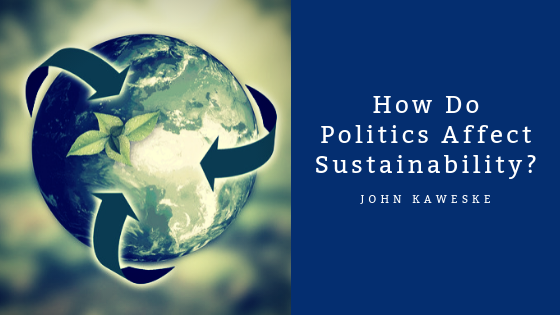Reduce, reuse, recycle; it’s nothing you haven’t heard before. But with the United Nation’s recent report that we have roughly only 12 years before the effects of global warming become irreversible, going green and the buzzword concept of sustainability might be weighing a little bit more heavily on your mind. Besides sorting out your aluminum cans and glass bottles, what can you do to help engage in and encourage sustainability? The question that must be addressed first and foremost is the following: just how do politics affect sustainability, and moreover, how do they encourage or discourage it?
Who gets to be in charge of the EPA?
As an independent agency of the United States government, the president gets to appoint the head administrator of the Environmental Protection Agency. The EPA, which was founded with the intent to oversee human and environmental health advises on everything from wildlife conservation to oil spills and the safety of chemicals in the marketplace. The EPA has the power to push for regulations that can help to preserve the world around us. President Trump appointed Scott Pruitt, a climate change denier to head the EPA. Pruitt resigned following corruption allegations.
Factory regulations
The EPA oversees a lot of important duties, perhaps one of the most important in the fight against climate change being its ability to impose greater eco-friendly regulations on factories to ensure more sustainable manufacturing.
A Green New Deal
By this point, you may have heard of people tossing around the phrase “Green New Deal.” It’s catchy and purposely reminds you of FDR’s New Deal plan. But just what is the deal with it exactly? The Green New Deal is a response to the report above from the UN and seeks to create green-friendly jobs in sectors like clean energy and agriculture. Democrats are currently working to establish a committee that will research how to implement best this hypothetical plan to target both climate change and income inequality through job creation.
Funding For National Parks
The ecosystem is a resilient yet delicate thing. Because of this dichotomy, it is imperative that both plant and animal species are preserved to the best of our abilities. This is where wildlife conservation and things like national parks come in. National parks not only allow for environments and their ecosystems to be kept pristine; they allow others to come and learn about and appreciate that beauty too! In 2017, the Trump administration proposed a 13% cut to National Park Service funding. While the proposal ultimately failed to pass in Congress, it would have been the biggest budget cut to an agency since World War II.
About The Author
John Kaweske is an Entrepreneur, Consultant, and Biodiesel Expert in Colorado Springs, Colorado. He is the President of Bio Clean Energy, S.A., a biodiesel holding company with diversified assets in the clean energy sector in Sao Paulo, Brazil. In 2018, John and Bio Clean Energy won a $36 million contract with the Bolivian Government, sparking his incredible start in the clean energy sector. Today, John Kaweske continues his work in business, and maintains a monthly meditation blog.

